March 17, 2023 —
It’s a swell feeling to be able to serve!
Yeoman Third Class Lucretia M. Maxwell, U.S. Coast Guard temporary reserve
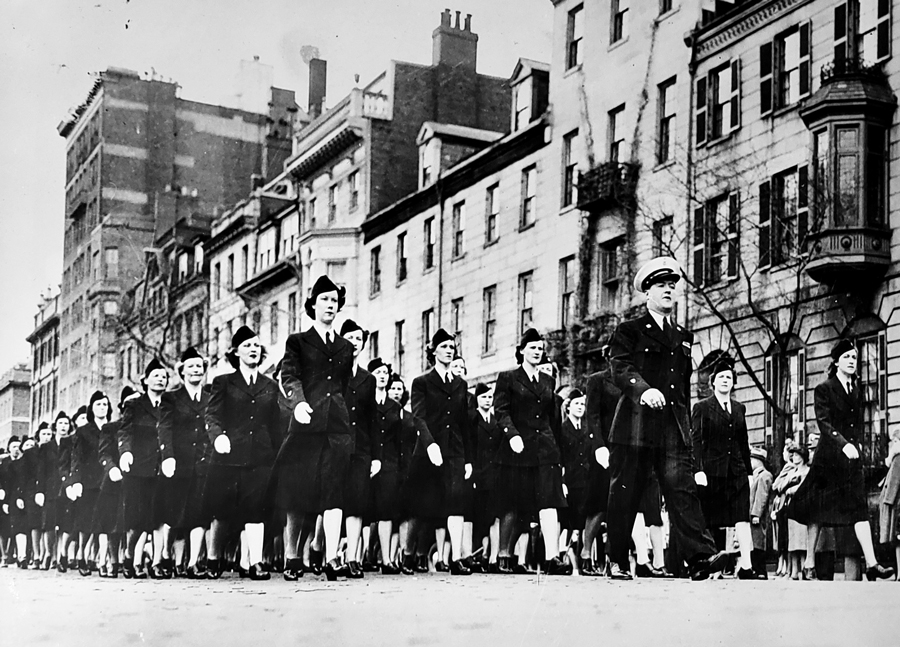 During World War II, the Coast Guard was short of personnel. The need for regular Coast Guardsmen and reservists for sea duty drew down the number of men available for securing our homeports from the enemy. In June 1942, using the Coast Guard Auxiliary and Reserve Act of 1941, then Commandant of the Coast Guard Russell Waesche addressed the need for personnel by outlining provisions for a part-time “Temporary Reserve.”
During World War II, the Coast Guard was short of personnel. The need for regular Coast Guardsmen and reservists for sea duty drew down the number of men available for securing our homeports from the enemy. In June 1942, using the Coast Guard Auxiliary and Reserve Act of 1941, then Commandant of the Coast Guard Russell Waesche addressed the need for personnel by outlining provisions for a part-time “Temporary Reserve.”
Many temporary reservists served in the Volunteer Port Security Force (VPSF) led by Capt. Arnaud Marts, who later served as head of the Temporary Reserves. The patriotic men joining the VPSF were generally too old or otherwise unavailable for the draft, but they could still patrol and secure the docks. The women made that possible mainly by completing clerical work, transporting the men, and operating the canteens.
The VPSF needed a skilled leader to serve as senior woman officer. That woman was society matron and grandmother, Anita Clothier, who previously served with Marts on the Pennsylvania Council of Defense. Named to the position in March 1943, Lt. Clothier traveled from city to city, expanding the organization and reviewing the units.
As members of the temporary reserve, female volunteers needed uniforms. They did not belong to the Coast Guard Women’s Reserve, whose members were known as SPARs, so the female Temporary Reservists needed a different uniform. According to Clothier, “[i]t was necessary to create a uniform distinctive from the SPARs so there would be no confusion in the mind of the public.” Clothier’s uniform design called for Navy black fabric, three buttons, and slash pockets below the waist. In contrast, the blue SPAR uniform had four buttons and lacked slash pockets. Unfortunately, tight supply chain issues meant many temporary reserve women went un-uniformed, and the uniforms that did arrive were ill fitting. When Marts visited the San Francisco VPSF in April 1944, the women provided him with considerable data about the problematic uniforms. Soon after, a directive from Washington stated that women without uniforms would receive SPAR uniforms. Temporary reserve officers wore royal blue stripes rather than the reserve blue that SPAR officers wore. In addition, temporary reserve women were not authorized to wear the white dress uniform, and their only official hat was the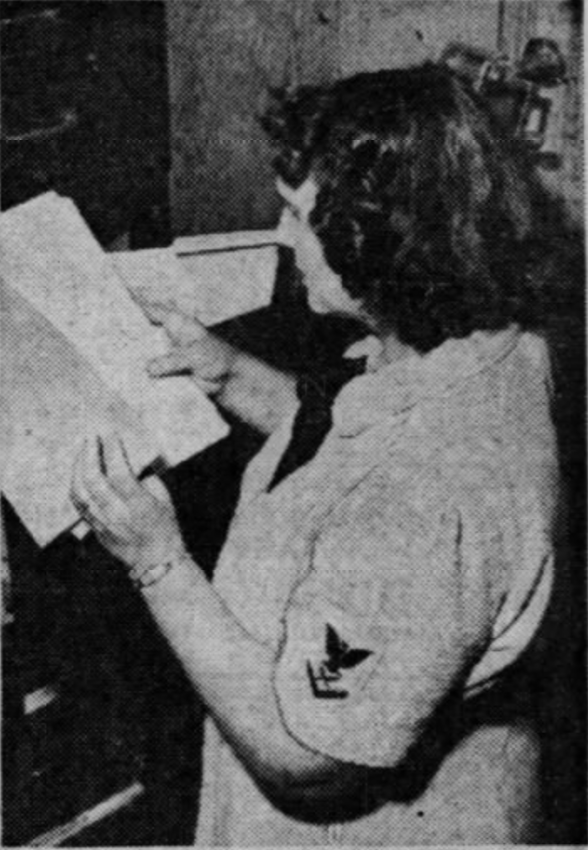 garrison cap.
garrison cap.
Unlike the Coast Guard SPARs, the 2,000 female temporary reservists enjoyed no unique official nickname. The Manual of the Volunteer Port Security Force refers to them as “women members,” but their moniker differed from district to district. Two postwar writers from Boston described them as “TR Spars.” One of them repeated that name in a monograph he wrote about the Coast Guard Temporary Reserve. However, the other author clarified that the women were officially known as “Women Members of the Temporary Reserve,” a name also used by Boston newspape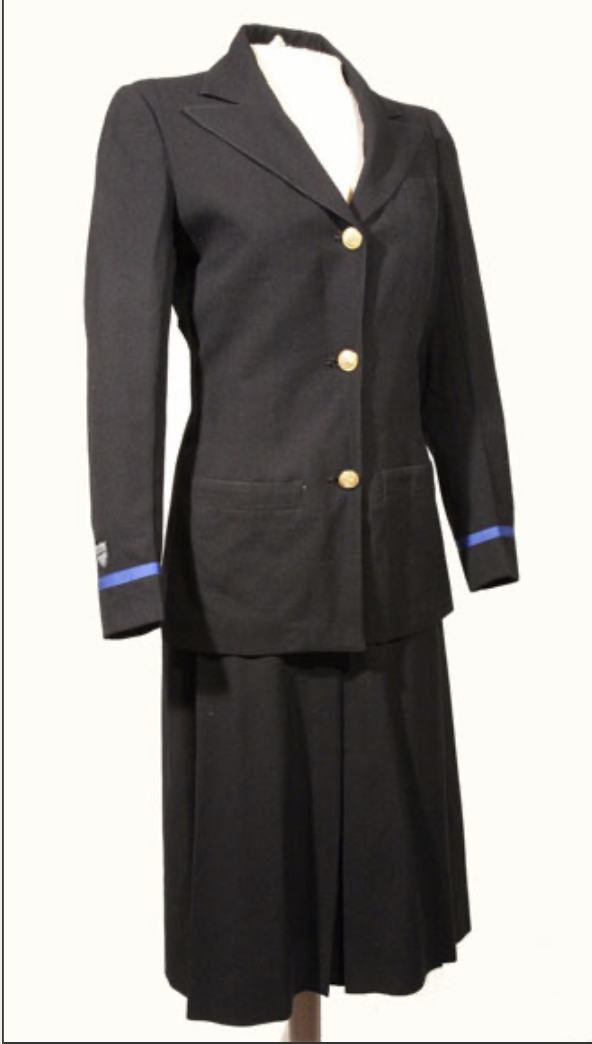 rs. The VPSF in San Francisco used the names “TR women,” “women temporary members of the USCGR,” and “WRs of the VPSF.” In Seattle, they were called “Women Temporary Reservists.” The list could continue.
rs. The VPSF in San Francisco used the names “TR women,” “women temporary members of the USCGR,” and “WRs of the VPSF.” In Seattle, they were called “Women Temporary Reservists.” The list could continue.
Open to females from 20 to 65 years old, the women were generally over 30 years in age. Like most of their male counterparts, they received no pay for working at least 12 and often more hours a week. Securing the ports was a round-the-clock operation, with many volunteers preferring the night shift as they worked a variety of other jobs during the day.
Many women Temporary Reservists had unique civilian jobs. The uniformed woman driving along San Francisco’s Embarcadero might be the fashion editor at the San Francisco Examiner, a renowned sculptress, or the head of Golden Gate Park, as was the case respectively for “Babette” Snyder, Adelaide Kent Howard, and Sydney Stein. Others were patriotic homemakers and mothers of servicemen. Yeoman 3rd Class Lucretia Maxwell’s son was in the Navy. “My boy is on his second trip overseas and I feel that by working here I’m doing something to shorten the war,” noted Maxwell. “He thinks it’s fine for me to do it, too.”
Like their male counterparts, each woman passed a background check and physical examination. Clothier wrote that an artificial leg was “no hindrance if the volunteer is going to sit all day at a typewriter or switchboard.” Both the men and the women completed a training course. Drilling was optional, but many women took part and some trained to use weapons. Ultimately, women temporary reservists served with VPSF, flotillas, and at Coast Guard District offices.
Patrol Boat Skipper Jean Linderman—From auxiliarist to temporary reservist
Frequently mentioned in the society pages, Jean Thornton of Ontario, Canada, married inventor Bert Linderman in 1931. He built an opulent winter home and fishing lodge named Liar’s Lair on a 16-acre Florida key. They entertained the glitterati of the era, but more importantly, Mrs. Linderman developed expertise in operating and maintaining their boats. By the time Bert died in 1938, 34-year-old Linderman knew the snaky, dangerous waters of the Keys so well she could speed down the waterways at night without lights.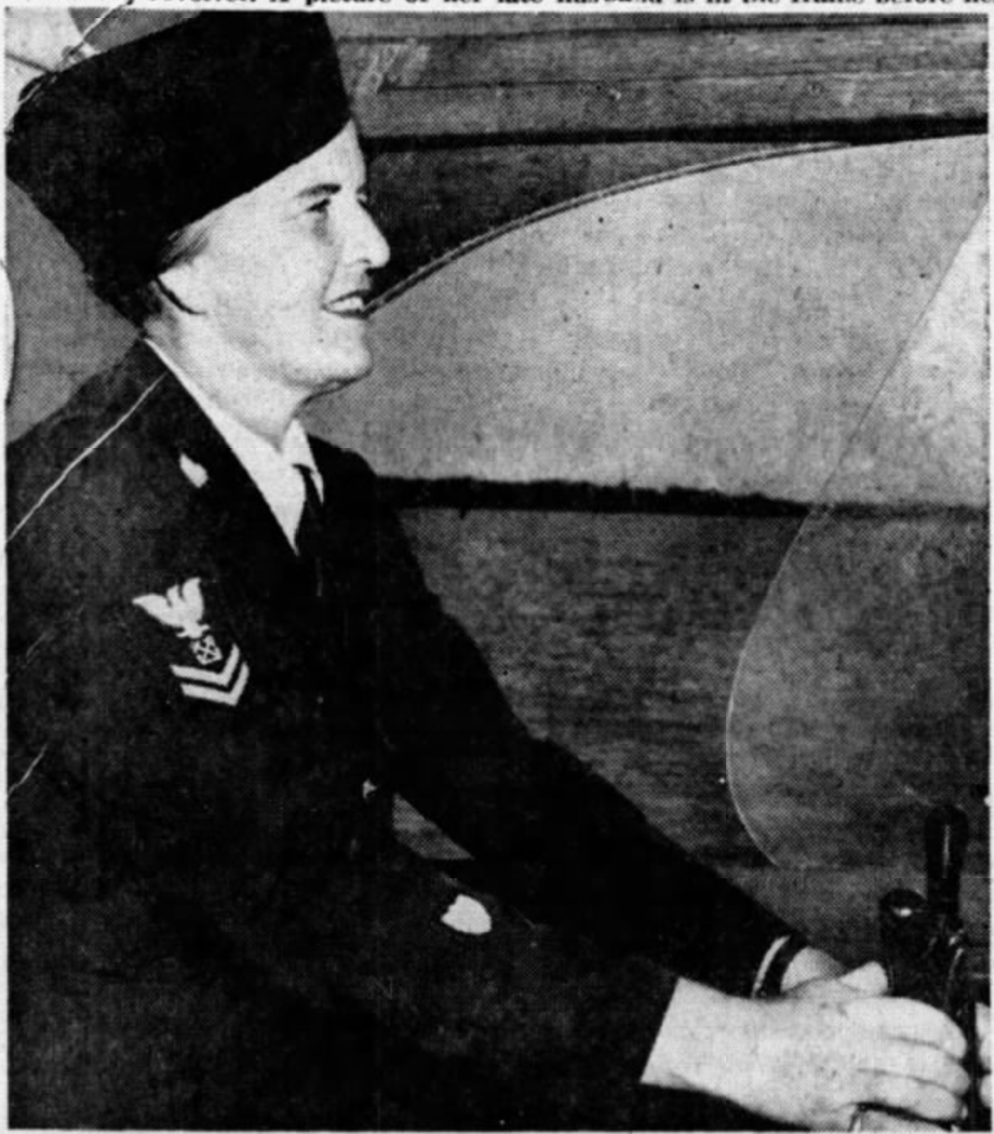
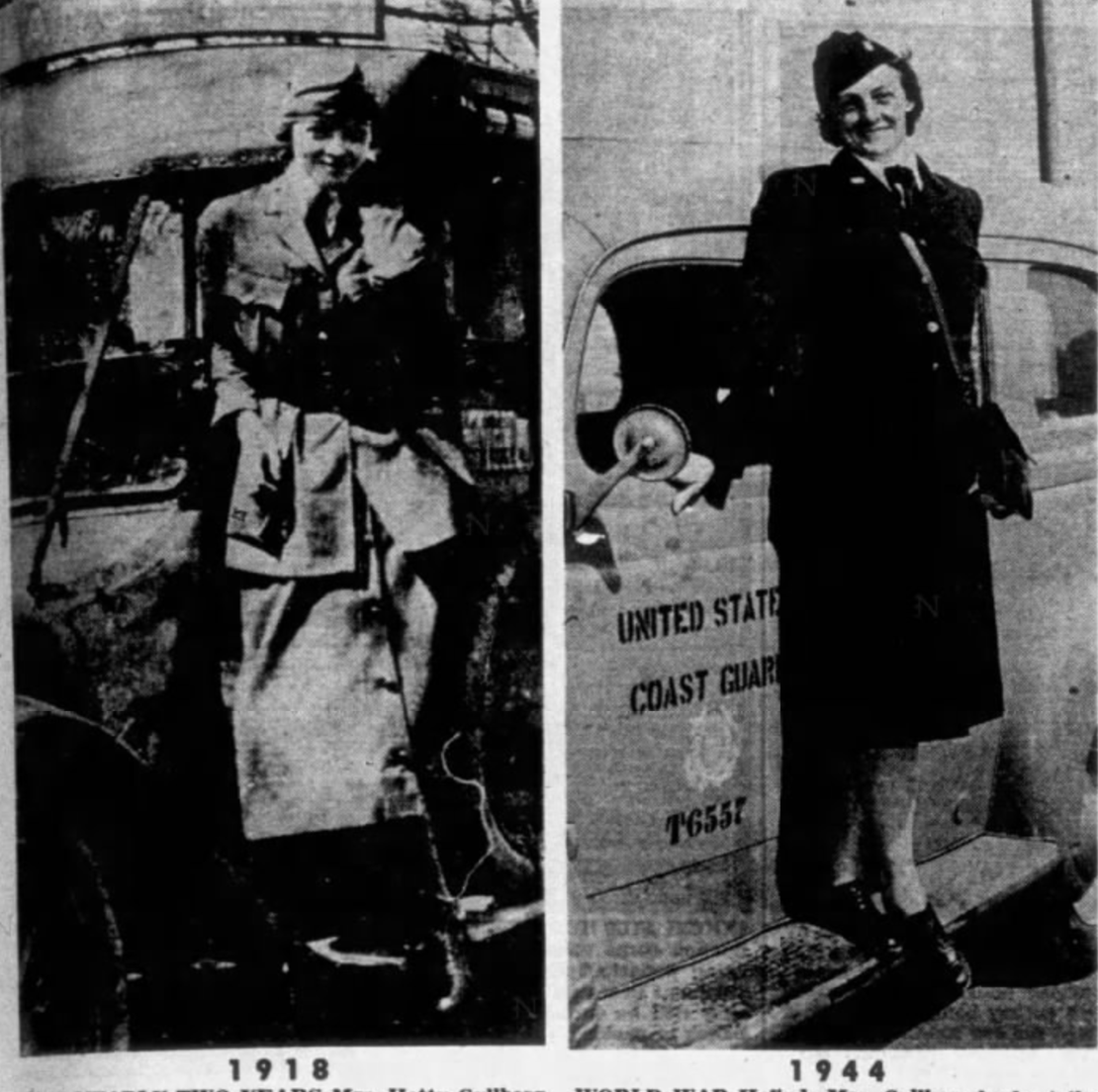
Then came the war. Jean Linderman owned three boats, so she joined the Coast Guard Auxiliary Tavernier Flotilla. She patrolled her section of the coast and the Florida Keys. Even after the Coast Guard relieved other Auxiliarists of patrol duties, she continued her daily patrol.
Auxiliarist Linderman became a temporary reservist. Initially, the skipper was a boatswain’s mate second class, however, according to the Miami Herald, she mustered out as an ensign. Holstering a .38 caliber revolver, she patrolled daily using her cruiser Clovelly, the speedboat Jean, or an outboard. Her keen surveillance led to the capture of a two-time Army deserter.
The local Coast Guard command respected her skills and experience. When Coast Guard officials visited and joined Linderman for patrols, she enjoyed scaring them with her daredevil boating antics. On one occasion, water in the gas tanks caused both motors to quit. She chuckled to a reporter, “You should have seen those three and four stripers take off their coats and take orders from a boatswain.” One of the “regulars” stationed nearby said, “I don’t know what we’d do without her. She knows the Keys and people so well that it would take years to train anyone to take her place.”
Linderman’s civilian social life resumed after the war, and she entertained at Liar’s Lair until she sold it to the University of Miami in 1962. According to the National Park Service, the University leased the property to the CIA. After the CIA left, a fire or an explosion destroyed Liar’s Lair. Linderman died in 1984. Her obituary mentions nothing about her World War II service or Liar’s Lair.
Bandmaster Dorothea “Dot” Slamin—from temporary reservist to SPAR
Able to do every baton trick usi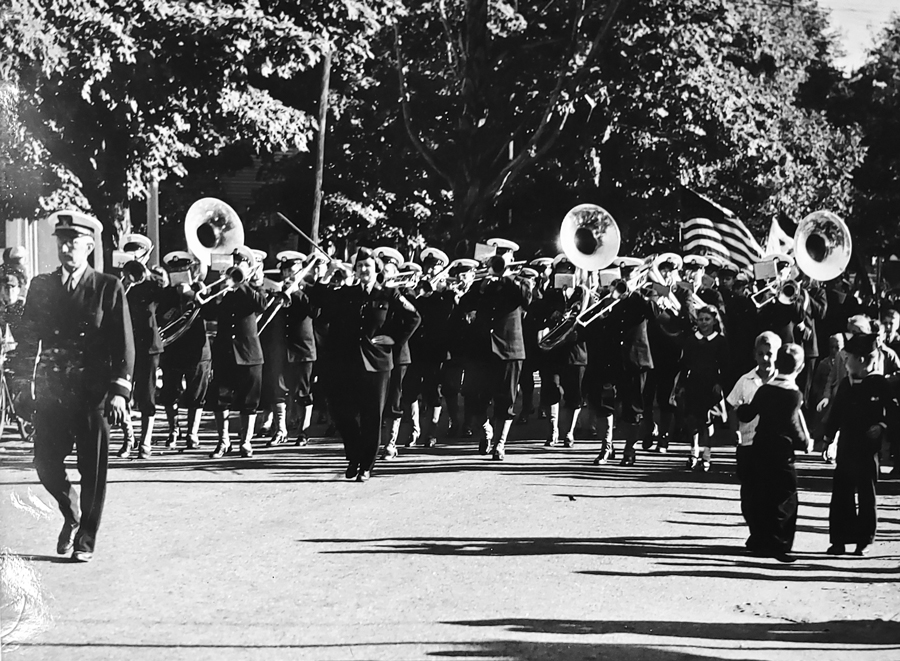 ng either hand while leading her band, drum major Dot Slamin was remarkable. At the 1933 Worl
ng either hand while leading her band, drum major Dot Slamin was remarkable. At the 1933 Worl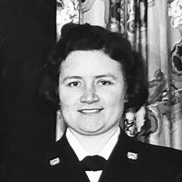 d’s Fair, the high school senior beat drum majors from across the United States to capture the national champion title. After graduation, she needed a new band to lead. The veterans employed by New England Telephone and Telegraph Company formed their own American Legion post, and its band needed a drum major. The telephone company hired Slamin to issue bonds, and she became the Legion band’s drum major just as the band was preparing to compete at the American Legion convention in Chicago. After reviewing nearly 500 bands, the judges proclaimed Slamin the best twirling and high-stepping drum major. She returned to Boston, remaining a draw at parades.
d’s Fair, the high school senior beat drum majors from across the United States to capture the national champion title. After graduation, she needed a new band to lead. The veterans employed by New England Telephone and Telegraph Company formed their own American Legion post, and its band needed a drum major. The telephone company hired Slamin to issue bonds, and she became the Legion band’s drum major just as the band was preparing to compete at the American Legion convention in Chicago. After reviewing nearly 500 bands, the judges proclaimed Slamin the best twirling and high-stepping drum major. She returned to Boston, remaining a draw at parades.
In late June 1943, Capt. W.N. Derby wrote to headquarters requesting permission to enroll Slamin in the temporary reserve as a bandmaster. He cited her 10 years of experience directing the all-male Legion band and that her band had joined the temporary reserve to do port security work. Adm. Robert Donohue’s response was “NO,” written and underlined twice using a vivid green pencil. At the time, the stated policy was to limit the number of women in the temporary reserve by restricting them to duties performed as industrial plant guards or in connection with Volunteer Port Security. Perhaps Derby’s request was too vague. In a memorandum dated July 1, 1943, the admiral asked, “Is there not already a band authorized in Boston? If so, what will a man do that is brought in ‘for port security work?’”
Derby ignored Donohue’s rejection. When Derby and Marts reviewed the area’s 1,500 temporary reserve personnel on July 7, 1943, Slamin and her Savin Hill Flotilla 504 band led the marchers. On July 31, 1943, Derby requested a second time to enroll her as bandmaster, stating she would be used “for duty in connection with port security activities. Her main duty will be as a leader of the temporary reserve band, which is used in connection with the marching drill of port security personnel.”
With permission from headquarters, on Aug. 30, 1943, Slamin finally enrolled in the Temporary Reserve. After one year of drilling and leading the band, she dis-enrolled from the Temporary Reserve and enlisted in the SPARs. The band leader turned transportation specialist directed all motor vehicle assignments at Boston’s Coast Guard garage before her honorable discharge in June 1946.
Driver Hetty Gyllberg—From yeomanette to temporary reservist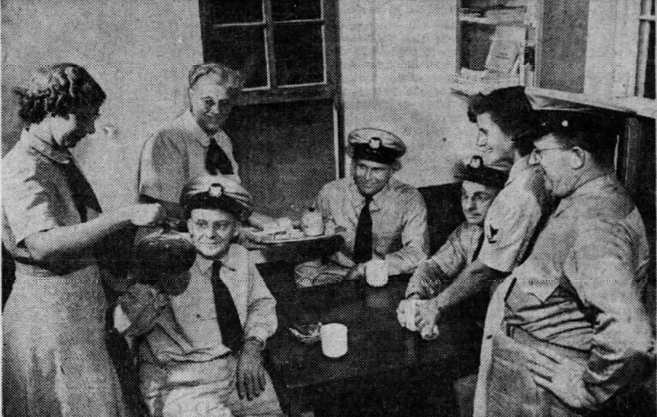
Some women temporary reservists conveyed service men to their duties, while others carried “chow” to them. Wearing a Women’s Motor Corps uniform during World War I, Hetty Gyllberg spent two years in France, skillfully driving an ambulance. She carried wounded doughboys, often through shellfire, between Brest, Bordeaux, and St. Nazaire. According to the Long Beach Independent newspaper, she earned a French Croix de Guerre. World War II found Temporary Reservist Gyllberg volunteering about 50 hours per week behind the wheel, using military jeeps and Carryall trucks to transport men in Long Beach, Calif. When then-famous actor and Coast Guardsman Cesar Romero returned from the invasion of Saipan, Gyllberg drove him from his ship to district headquarters. After the war, Gyllberg volunteered as a sky watcher for the Long Beach Ground Observer Corps. Her obituary mentions nothing about her distinguished World War I or World War II service.
Emilia Saxton—Storekeeper
Before the war, Tampa resident Emilia B. Saxton ran unsuccessfully for political office, and at age 56, she attended a Works Progress Administration aviation ground school course. Widowed by a tragic car accident prior to the war, then 62-year-old Saxton distinguished herself by working 4,400 hours for the temporary reserve. She filled two roles. As a storekeeper first class, she managed a canteen, ensuring the hungry men protecting the port received coffee, cake, and sandwiches. Secondly, as the Force Rationing Officer, she issued reimbursements to temporary reservists for gasoline used while driving personal vehicles for temporary reservists duties. In September 1945, when Tampa’s temporary reservists organization was officially dis-enrolled, the unit received the Coast Guard’s Security Shield of Honor award. Saxton was singled out for special commendation.
After the war, Saxton was elected to the board of d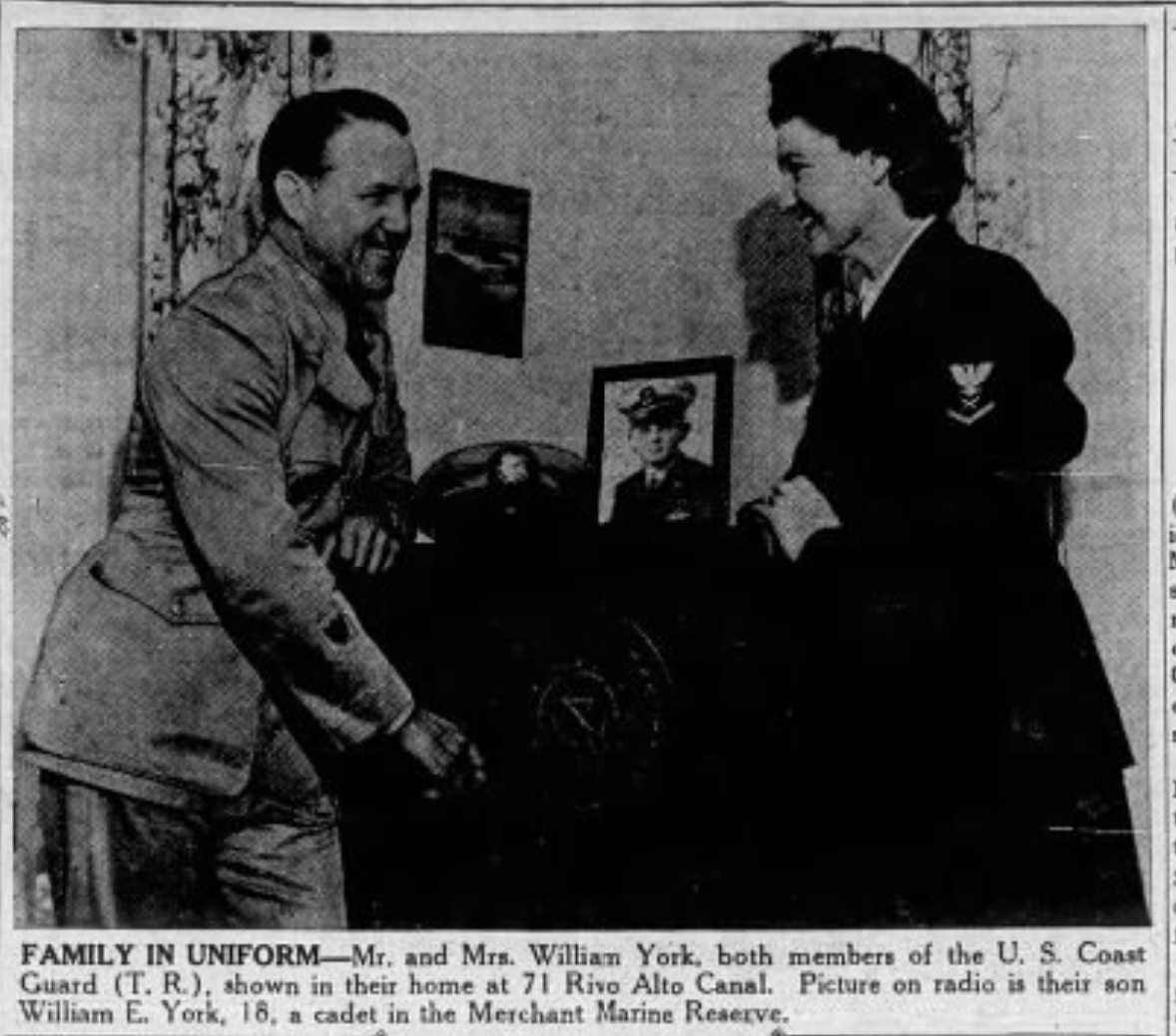 irectors of the Coast Guard League when it formed in Tampa in 1945. For years afterward, she held offices in both the League and Auxiliary. Her obituary is silent about her wartime service.
irectors of the Coast Guard League when it formed in Tampa in 1945. For years afterward, she held offices in both the League and Auxiliary. Her obituary is silent about her wartime service.
Two for the Price of None—Yeoman Alberta York and Seaman Bill York
Alberta and Bill York were a “home front pair typical of those who serve,” wrote a reporter from California’s Long Beach Sun. They were not alone, as many other couples thought enough of their democracy to devote hours to preserving it. Their 18-year-old son was serving with the Merchant Marine in the South Pacific. Bill was in the oil business, but as a seaman first class, he volunteered an average of 20 hours per week with the VPSF. Yeoman Third Class Alberta was one of the first temporary reservists women to receive a rating, initially serving as regimental headquarters platoon leader and organizing the women temporary reservists. Her dedication and hard work merited her promotion to the rank of ensign. A staged photograph taken in September 1944 shows her instructing the mostly uniformed women of the San Pedro, Calif., VPSF in the technical terms used in piloting, seamanship, and small boat handling—all necessary knowledge for their clerical duties.
By 1945, over 2,000 women had served in the temporary reservists. As Lt. Commander Clothier wrote at the war’s end: “You have all been a vital factor in hastening final victory.” After the war, they received no veteran benefits, and their obituaries rarely mention their service to the nation. Nearly 80 years later, the women seem forgotten by history despite their impactful contributions. Their patriotic service to the United States Coast Guard during World War II deserves its place in history.